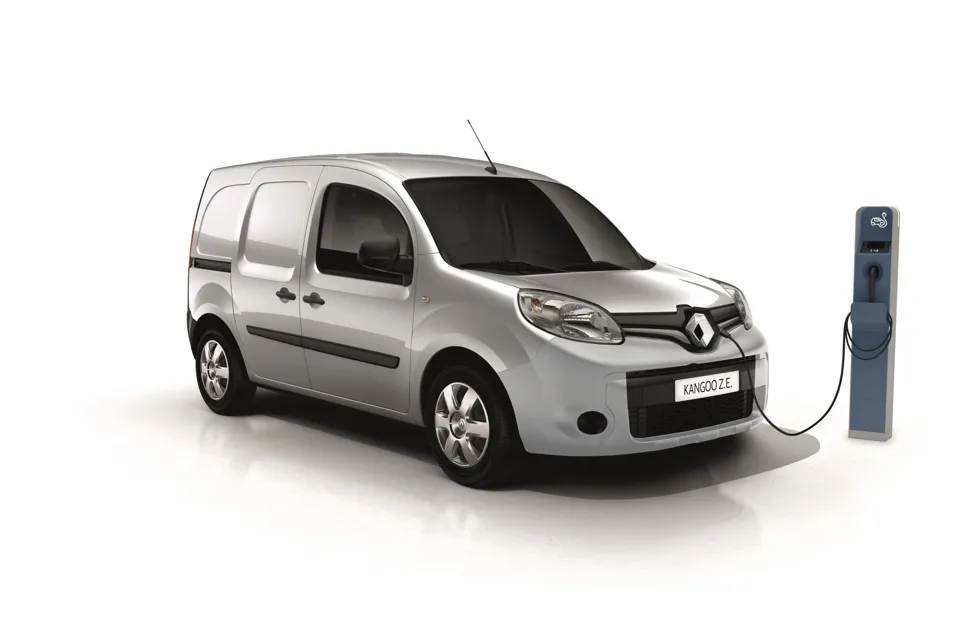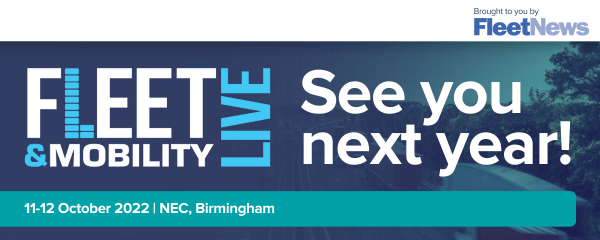The number of electric vans registered in the UK continues to be dwarfed by tradional internal combustion engine (ICE) vehicles, but a growing number of fleets are starting to make the switch to plug-in vehicles, according to data published by the Department for Transport (DfT).
The data shows that at the end of Q2 this year, there were 10,000 electric light goods vehicles (LGVs), which qualified for the plug-in van grant, registered in the UK.
An additional, 1,180 electric LGVs were registered during Q1, with a further 659 licensed during Q2, when the first lockdown was introduced. The 10,000 electric vans, however, make up a small proportion of the 4.1 million LGVs registered in the UK
David Bushnell, principal consultant at vehicle leasing company Alphabet GB, said: “Throughout 2020, our conversations with customers have been dominated by how to integrate an alternative drivetrain strategy into their fleets and this has continued during the pandemic.
“We have been constantly engaging on this topic with our customers and are seeing a lot of forward-thinking businesses that are now starting to make the move to electric.
“With electric van sales, we’ve experienced a year-on-year increase of 72% in 2020, and we only expect this upsurge to continue.”
It was a similar story at Arval UK, with plug-in vans gaining traction among its customer base.
David Watts, senior consultant at the vehicle leasing company, said: “This year we’ve seen the level of interest double from our customers.”
Data from the Arval Mobility Observatory also appears to confirm that “high level” of interest, according to Watts.
“When asked why they planned to adopt alternative fuels, 43% of fleet managers reported that they were looking to limit carbon emissions and air pollution,” he said.
“More than a third (37%) also reported adopting alternative fuels to improve company image. This is a canny step as, more so than cars, vans are both business tools and mobile billboards.
“So, maintaining access to cities that are adopting stricter air quality measures and being seen in environmentally-friendly vehicles have definite benefits for fleets which make the switch.”
MOTIVATIONAL FACTORS
Alison Bell, marketing director at Venson Automotive Solutions, also reports a growing interest from commercial fleet operators in plug-in vans.
She explained: “The motivation seems to be driven by one or all of the following: they have a clear strategy for lowering CO2 across the organisation; they have an interest in understanding whether the technology suits their operational requirements; it adds to their brand by having greener vehicles on fleet; and they perceive that there are cost savings for their organisation.”
British Gas placed an order for 1,000 electric vans from Vauxhall and said further orders will follow as it transitions to an all-electric fleet.
The Vauxhall Vivaro-e vans will be delivered over the next 12 months and be rolled out nationwide to be used by British Gas engineers.
The organisation and its parent company Centrica, which runs 12,000 vehicles making it the third largest commercial fleet in the country, has committed to transitioning to a 100% electric fleet by 2030 under the EV100 initiative.
In deploying the electric vans, British Gas will also target areas where pollution is a problem and where replacement cycles allow.
ALL-ELECTRIC FLEET BY 2030
Openreach placed an order for 270 Vauxhall Vivaro-e vans weeks later.
With around 27,000 vehicles, Openreach operates one of the UK’s largest fleets, and has run diesel versions of the Vauxhall vans for the past 15 years, but it has also committed to operating an all-electric fleet by 2030.
Clive Selley, Openreach CEO, explained that the order was an “important first step” as it begins to move its fleet to being fully electric.
It is also trialling the Ford Transit Custom plug-in hybrid to determine whether the powertrain technology will suit its day-to-day operations.
There is evidence of growing momentum in the LCV market, transitioning away from conventional diesel fuelled lLCVs toward electric light commercial vehicles (eLCVs), according to IDTechEx.
The past 12-months have seen a slew of eLCV models launched and further announcements about future eLCV models which are being developed both by traditional OEMs and exciting new start-ups, it says.
IDTechEx’s new report ‘Electric, Hybrid & Fuel Cell Light Commercial Vehicles 2021-2041’ provides a Covid-19 adjusted, 20-year outlook for the eLCV market.
While historically the primary motivation for businesses to purchase electric commercial vehicles has been to address environmental concerns around exhaust emission and to enhance a company’s ‘green credentials’, IDTechEx argues that increasingly the motivation for eLCV uptake need no longer be environmental, but economic.
For example, it says that even without Government purchase subsidies, small electric LCVs, could reach TCO parity with a comparable diesel vehicle within 4.4 years, with the extra upfront cost of the EV powertrain offset by fuel savings (using electricity instead of diesel) and reduced maintenance and servicing.
DIESEL AND PETROL BAN
The Government has announced that new petrol and diesel vans, and cars, will not be allowed to be sold in the UK from 2030.
It has, however, said that it will allow the sale of hybrid vans and cars that can drive a "significant distance with no carbon coming out of the tailpipe" until 2035, suggesting that the five-year extension will only apply to plug-in hybrid electric vehicles (PHEVs).
The Government had previously announced it would end the sale of internal combustion engine (ICE) cars and vans by 2040.
However, in announcing a 10-point plan to tackle climate change and create new ‘green’ jobs, Prime Minister Boris Johnson confirmed the Government was bringing forward the ICE ban.
It also says it will also launch a consultation on the phase out of new diesel HGVs. No date has been set yet.
Transport secretary Grant Shapps sais before the announcement was made that the views of the fleet and leasing industry were of “critical importance” in making that decision.
He told delegates at the ‘Fleets in Charge’ virtual conference, organised by the British Vehicle Rental and Leasing Association (BVRLA): “No one has greater insight into the current generation of electric vehicles and how the market is developing or the challenges of bringing forward the transition date than you.”
More than half (51%) of attendees at the conference said a more realistic target for ending the sale of diesel and petrol vans and cars was 2035; more than a third (36%) believed that 2030 was possible, while just 13% agreed with the existing 2040 Government target.
Asked if there should be a different end date for internal combustion engine (ICE) vans, just over a third (35%) said sales restrictions should apply at the same time, while the vast majority – 65% – wanted any ban on ICE vans five years later.
Nevertheless, British Gas, Openreach, Tesco, DPD UK, Mitie, SSE and E.On have been among a coalition of 27 companies – part of the UK Electric Fleets Coalition – that called on the Government to bring forward a ban on the sale of new petrol and diesel vans and cars to 2030.
PLUG-IN SCOPE
DfT data has recently shown the scope for employing hybrid or fully electric vans.
The provisional findings of the 2019-20 van survey showed that half of all vans stayed local, within 15 miles of their base, on a typical day. Just over a third of vans travelled regionally (34%), 14% travelled nationally and 1% internationally (commercialfleet.org, October 5).
The data showed that those vans classed as ultra-low emission vehicles (ULEVs), emitting 75g/km of CO2 or less, were more likely to be used locally compared with ICE vans.
On a typical day, 75% of ULEVs stayed within 15 miles of their base, compared with 50% of non-ULEVs. Only 1% of ULEVs travelled more than 50 miles away from their base on a typical day.
However, vans used primarily for ‘transport’, ‘carrying equipment, tools or materials’ or the ‘delivery/collection of goods’ tended to travel further than 15 miles from base.
The group most likely to go further were vans used for ‘delivery or collection of goods’, with 61% of these travelling regionally or further on a typical day.
A version of this article was first published in the October edition of Commercial Fleet. However, some of the data quoted in the original article had been incorrectly interpreted and this has been addressed in this latest version. Fleet News apologises for the error.





















Login to comment
Comments
No comments have been made yet.